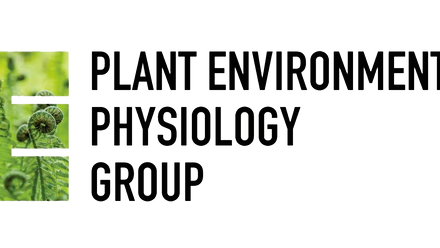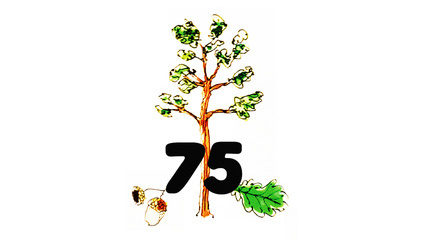The Ever-increasing Role that Sunflowers Play in Society
Many cultures around the world equate sunflowers with happiness and harvest. They have been used as a crop for thousands of years, having first been domesticated in parts of Northern America by Native Americans. With growing concerns over the Climate Crisis and food security, much research has been undertaken on crops to increase their yield, reduce emissions, and protect the viability of fertile land. Research related to sunflowers is having real-world impacts, including the creation of biofuels and eco-products using previously discarded harvest waste, and uses in pharmaceutical development.
Sunflower harvest waste helps to reduce our reliance on fossil fuels
Traditional harvesting practices only use a small portion of the total plant; in the case of sunflowers, it is only the seeds that are used for consumption. The rest of the harvested material, such as leaves, stalks, and hulls (seed shells), are considered by-products, and are either ground up and ploughed back into the soil or added to livestock feed.1 This traditional harvesting can cause the release of carbon dioxide (CO2) as the soil microorganisms break down the components of this by-product.1 Research examining these practices has demonstrated that the majority of this by-product can be better used in creating biofuels.2 The use of such material as biofuel is known as second-generation biofuel.3 Their precursor, first-generation biofuels, used the same material that would have been used as food, resulting in debates on their ethicality owing to their competition with food production.4 In the case of sunflowers, in some parts of the USA, they are now being used to generate biofuel that is blended with diesel for cars to reduce emissions.2, 5 By using sunflower by-product in a more efficient manner, these new developments are reducing CO2 emissions both by eliminating the discarded breakdown of unused by-product and by acting as a greener alternative to fossil fuels.
Sunflower by-product can also be used to manufacture eco-products. For example, a hardboard biomaterial has been developed by compressing the fibres from sunflower stalks under extreme heat, producing a material that can be used as an alternative to many kinds of hard plastics.6, 7 A similar process can also produce bolts, furniture, insulation panels, and smartphone cases. A key protein found within the hulls of sunflower seeds can create a natural superglue, which can be used to adhere various biomaterials together.7, 8 To help reduce single-use plastics and non-recyclable packaging, the marrow-like spongy material contained within the stalks of the sunflowers has been used to produce a biodegradable polystyrene.9 Biodegradable films can also be made from the protein found in hulls as a natural alternative to plastic food wrap.10 However, more investment is required to develop and refine the infrastructure so that growers and producers of biomaterials can further commercialise these new eco-products.
Sunflower products benefit animals
Another major issue facing our world is the decline of pollinating insects that help plants reproduce and grow fruit, making them an essential player in agriculture. Research has shown that pollen from the common annual sunflower contains an anti-parasitic substance that reduces a bee’s infection rates and susceptibility to two devastating protozoan (microscopic life forms) and fungal parasites.11 Planting sunflowers around fields is a simple solution to help improve the health of these economically important insects. Sunflowers can also have an impact on larger economically important animals; for example, supplementing livestock feed with sunflower oil (5% by dry weight) can reduce a dairy cow’s methane (CH4) emissions by up to 23% as well as enhancing the nutrition of feed.12, 13 Given that CH4 is a more potent greenhouse gas than CO2, this could be of critical importance. More research is required to determine if adding sunflower oil is economical when scaling up.
Use of sunflowers in medicine
Contained within sunflower oil is a fat molecule called lecithin, which is also found in other plants and animals. Lecithin is an amphiphilic molecule, meaning that it can attract both water-soluble and other fat molecules. This unique property allows sunflower oil to envelop substances into a bubble-like structure (called a micelle) when added to water.14 Sunflowers produce large amounts of micelle, making it of interest to industry. Research has demonstrated that the amphiphilic properties of sunflower lecithin can aid the absorption of medicines that have poor solubility, thereby increasing the effectiveness of such medicines.15 Another interesting pharmaceutical property of sunflowers is a protein called sunflower trypsin inhibitor-1 (SFTI-1), which has been shown to inhibit some cancer-causing enzymes.16, 17 However, to date this protein has not been adopted by industry owing to the expense of producing synthetic versions of it on a commercial scale.
A recent concept emerging from plant science is that of pharmaceutical crops, or pharma crops, which are genetically modified to produce higher amounts of therapeutic substances used in drugs and vaccines.16 Developing pharma crops would provide a cheaper and more natural source of medicines. An area of concern when growing these crops is the potential for cross-contamination with non-genetically modified plants. However, this should not be an issue with pharma crops because the strict sterile measures needed to grant a licence require them to be grown in biosecure greenhouses . An example of a successful pharma crop is Artemisia, which produces a molecule called artemisinin that is used to treat malaria.18 It is thought that sunflowers could soon be used as a pharma crop to produce a drug for cancer treatment.16
Sunflowers have been cultivated for thousands of years. With the Climate Crisis and pressure to refine agricultural practices, their usage has become more versatile. Sunflower by-product can be converted into a range of eco-products that help detach us from fossil fuels. Sunflowers also have an anti-parasitic substance that can protect bee populations from devastating infections. Supplementing cattle’s diet with sunflower oil can reduce their methane emissions by almost a quarter. Sunflowers also contain a compound that inhibits enzymes involved in the growth of some cancers. In the future, this crop may become a pharmaceutical plant factory.
References:
1. European Bioenergy Day. 2020. Crop by-products. http://www.europeanbioenergyday.eu/bioenergy-facts/scrolling-bioenergy/crops-by-products/#:~:text=A%20crop%20by%2Dproduct%20is,litter%2C%20or%20as%20green%20energy
2. Manmai N, Unpaprom Y, Ramaraj R. Bioethanol production from sunflower stalk: application of chemical and biological pretreatments by response surface methodology (RSM). Biomass Conversion and Biorefinery 2020; 11: 1759–1773.
3. Bhuiya MMK, Rasul MG, Khan MMK, et al. Second generation biodiesel: potential alternative to edible oil-derived biodiesel. Energy Procedia 2014; 61: 1969–1972.
4. Muktham R, Bhargava SK, Satyavathi B, et al. A review on 1st and 2nd generation bioethanol production-recent progress. Journal of Sustainable Bioenergy Systems 2016; 6: 72-92.
5. Elkelway M, Bastawissi HA, Esmaeil KK, et al. Maximization of biodiesel production from sunflower and soybean oils and prediction of diesel engine performance and emission characteristics through response surface methodology. Fuel 2020; 266: 117072.
6. Karpati Z, Kun D, Fekete E, et al. Structural biomaterials engineered from lignocellulosic agricultural waste. Journal of Applied Polymer Science 2021; 138: 50617.
7. Myers L. Studio Thomas Vailly and atelier luma transform sunflowers into biodegradable material. Designboom. 2019. https://www.designboom.com/design/studio-thomas-vailly-atelier-luma-sunflower-bio-based-material-03-06-2019/.
8. Rawski DP, Bhuiyan MSH. Pulp and paper: nonfibrous components. In: KH Jürgen Buschow, RW Cahn, P Veyssiere (eds), Encyclopedia of Materials: Science and Technology. Amsterdam, Elsevier, 2017: 7908–7910.
9. Hitti N. Thomas Vailly uses sunflowers to make bio-based materials. Dezeen. 2019.
https://www.dezeen.com/2019/04/05/thomas-vailly-sunflower-material/
10. Salgado PR, Ortiz SEM, Petruccelli S, et al. Biodegradable sunflower protein films naturally activated with antioxidant compounds. Food Hydrocolloids 2010; 24: 525–533.
11. Giacomini JJ, Leslie J, Tarpy DR, et al. Medicinal value of sunflower pollen against bee pathogens. Nature 2018; 8: 14394.
12. Silva BCM, Lopes FCF, Pereira LGR, et al. Effect of sunflower oil supplementation on methane emissions of dairy cows grazing Urochloa brizantha cv. marandu. Animal Production Science 2017; 57: 1431–1436.
13. Osman NS, Sapawe N, Sapuan MA, et al. Sunflower shell waste as an alternative animal feed. Materials Today: Proceedings 2018; 5: 21905–21910.
14. Margineanu A. Biological applications of nanoparticles in optical microscopy. In: C Vasile (ed), Polymeric Nanomaterials in Nanotherapeutics. Amsterdam, Elsevier, 2019: 519–527. https://doi.org/10.1016/B978-0-12-813932-5.00026-1.
15. Riva A, Ronchi M, Petrangolini G, et al. Improved oral absorption of quercetin from Quercetin Phytosome®, a new delivery system based on food grade lecithin. Eur J Drug Metab Pharmacokinet 2018; 44: 169–177.
16. Mylne JS, Colgrave ML, Daly NL, et al. Albumins and their processing machinery are hijacked for cyclic peptides in sunflower. Nat Chem Biol 2011; 7: 257–259.
17. Veer SJ, White AM, Craik DJ. Sunflower trypsin inhibitor-1 (SFTI-1): sowing seeds in the fields of chemistry and biology. Angewandte Chemie 2021; 60: 8050–8071.
18. Bridgford JL, Xie SC, Cobbold SA, et al. Artemisinin kills malaria parasites by damaging proteins and inhibiting the proteasome. Nat Commun 2018; 9: 3801.






